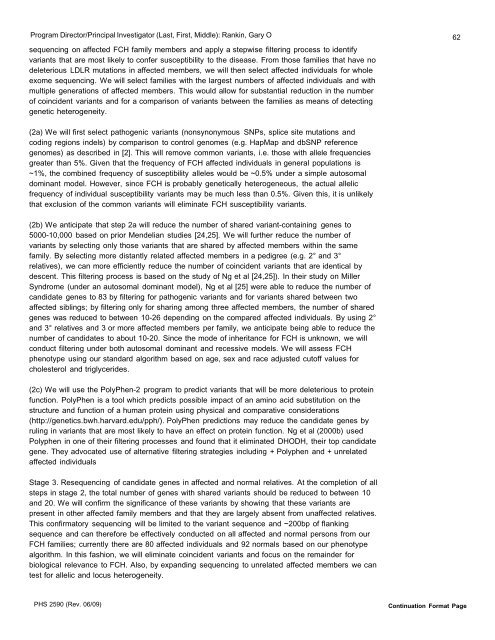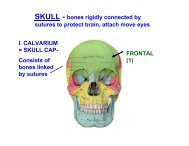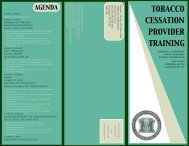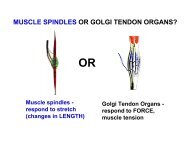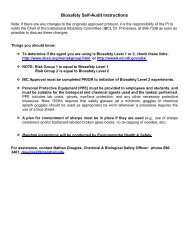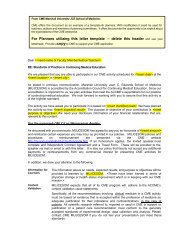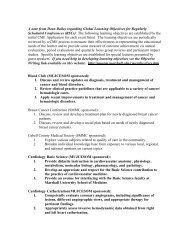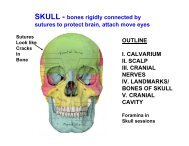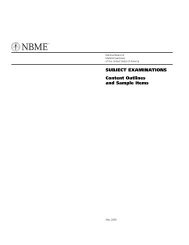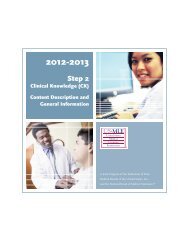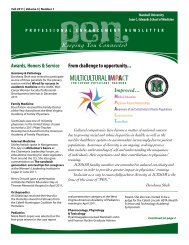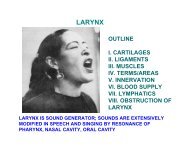FA 5 Progress Report WV-INBRE - Joan C. Edwards School of ...
FA 5 Progress Report WV-INBRE - Joan C. Edwards School of ...
FA 5 Progress Report WV-INBRE - Joan C. Edwards School of ...
- No tags were found...
Create successful ePaper yourself
Turn your PDF publications into a flip-book with our unique Google optimized e-Paper software.
Program Director/Principal Investigator (Last, First, Middle): Rankin, Gary O 62sequencing on affected FCH family members and apply a stepwise filtering process to identifyvariants that are most likely to confer susceptibility to the disease. From those families that have nodeleterious LDLR mutations in affected members, we will then select affected individuals for wholeexome sequencing. We will select families with the largest numbers <strong>of</strong> affected individuals and withmultiple generations <strong>of</strong> affected members. This would allow for substantial reduction in the number<strong>of</strong> coincident variants and for a comparison <strong>of</strong> variants between the families as means <strong>of</strong> detectinggenetic heterogeneity.(2a) We will first select pathogenic variants (nonsynonymous SNPs, splice site mutations andcoding regions indels) by comparison to control genomes (e.g. HapMap and dbSNP referencegenomes) as described in [2]. This will remove common variants, i.e. those with allele frequenciesgreater than 5%. Given that the frequency <strong>of</strong> FCH affected individuals in general populations is~1%, the combined frequency <strong>of</strong> susceptibility alleles would be ~0.5% under a simple autosomaldominant model. However, since FCH is probably genetically heterogeneous, the actual allelicfrequency <strong>of</strong> individual susceptibility variants may be much less than 0.5%. Given this, it is unlikelythat exclusion <strong>of</strong> the common variants will eliminate FCH susceptibility variants.(2b) We anticipate that step 2a will reduce the number <strong>of</strong> shared variant-containing genes to5000-10,000 based on prior Mendelian studies [24,25]. We will further reduce the number <strong>of</strong>variants by selecting only those variants that are shared by affected members within the samefamily. By selecting more distantly related affected members in a pedigree (e.g. 2° and 3°relatives), we can more efficiently reduce the number <strong>of</strong> coincident variants that are identical bydescent. This filtering process is based on the study <strong>of</strong> Ng et al [24,25]). In their study on MillerSyndrome (under an autosomal dominant model), Ng et al [25] were able to reduce the number <strong>of</strong>candidate genes to 83 by filtering for pathogenic variants and for variants shared between twoaffected siblings; by filtering only for sharing among three affected members, the number <strong>of</strong> sharedgenes was reduced to between 10-26 depending on the compared affected individuals. By using 2°and 3° relatives and 3 or more affected members per family, we anticipate being able to reduce thenumber <strong>of</strong> candidates to about 10-20. Since the mode <strong>of</strong> inheritance for FCH is unknown, we willconduct filtering under both autosomal dominant and recessive models. We will assess FCHphenotype using our standard algorithm based on age, sex and race adjusted cut<strong>of</strong>f values forcholesterol and triglycerides.(2c) We will use the PolyPhen-2 program to predict variants that will be more deleterious to proteinfunction. PolyPhen is a tool which predicts possible impact <strong>of</strong> an amino acid substitution on thestructure and function <strong>of</strong> a human protein using physical and comparative considerations(http://genetics.bwh.harvard.edu/pph/). PolyPhen predictions may reduce the candidate genes byruling in variants that are most likely to have an effect on protein function. Ng et al (2000b) usedPolyphen in one <strong>of</strong> their filtering processes and found that it eliminated DHODH, their top candidategene. They advocated use <strong>of</strong> alternative filtering strategies including + Polyphen and + unrelatedaffected individualsStage 3. Resequencing <strong>of</strong> candidate genes in affected and normal relatives. At the completion <strong>of</strong> allsteps in stage 2, the total number <strong>of</strong> genes with shared variants should be reduced to between 10and 20. We will confirm the significance <strong>of</strong> these variants by showing that these variants arepresent in other affected family members and that they are largely absent from unaffected relatives.This confirmatory sequencing will be limited to the variant sequence and ~200bp <strong>of</strong> flankingsequence and can therefore be effectively conducted on all affected and normal persons from ourFCH families; currently there are 80 affected individuals and 92 normals based on our phenotypealgorithm. In this fashion, we will eliminate coincident variants and focus on the remainder forbiological relevance to FCH. Also, by expanding sequencing to unrelated affected members we cantest for allelic and locus heterogeneity.PHS 2590 (Rev. 06/09)Continuation Format Page


